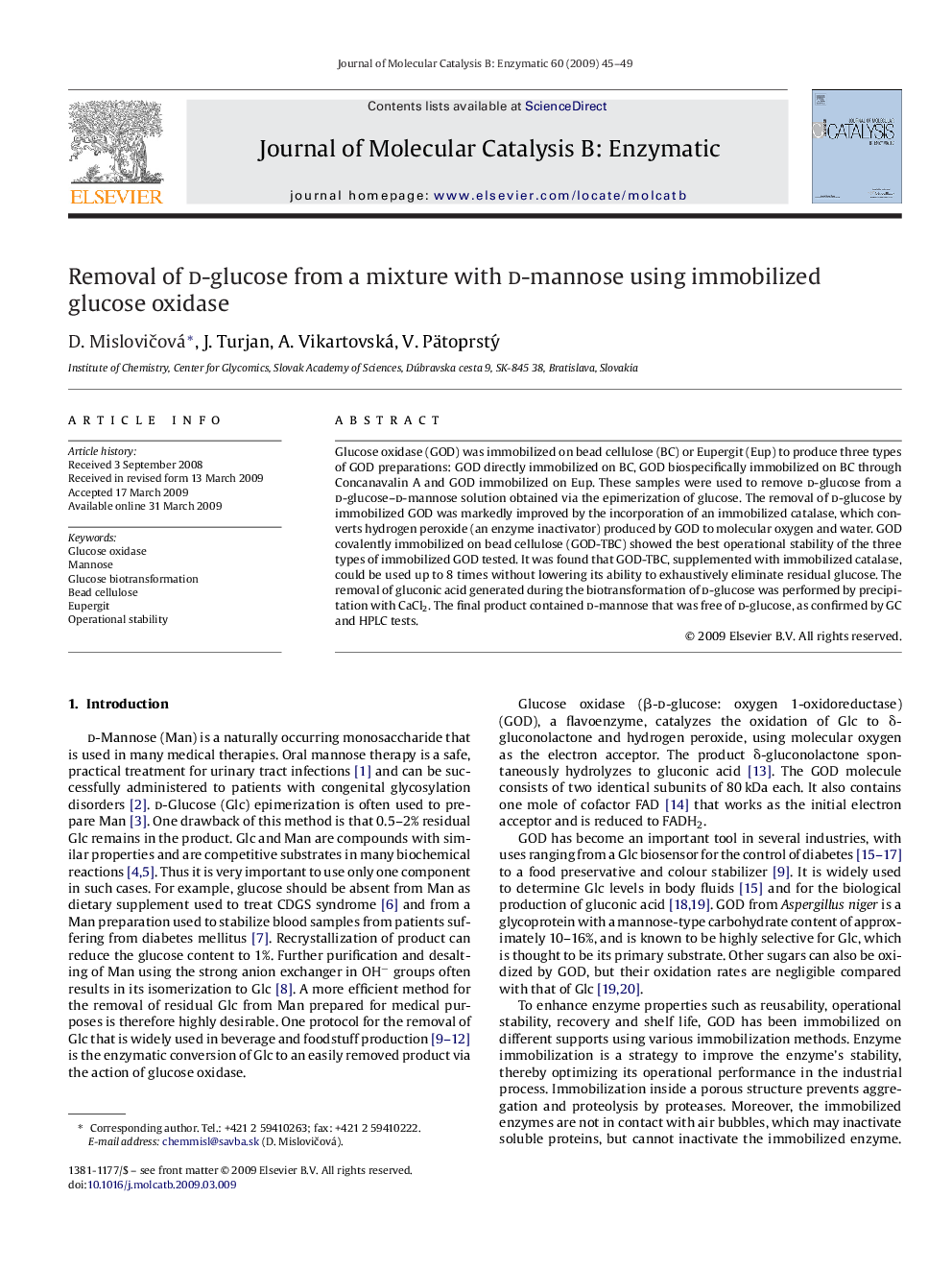| Article ID | Journal | Published Year | Pages | File Type |
|---|---|---|---|---|
| 70945 | Journal of Molecular Catalysis B: Enzymatic | 2009 | 5 Pages |
Glucose oxidase (GOD) was immobilized on bead cellulose (BC) or Eupergit (Eup) to produce three types of GOD preparations: GOD directly immobilized on BC, GOD biospecifically immobilized on BC through Concanavalin A and GOD immobilized on Eup. These samples were used to remove d-glucose from a d-glucose–d-mannose solution obtained via the epimerization of glucose. The removal of d-glucose by immobilized GOD was markedly improved by the incorporation of an immobilized catalase, which converts hydrogen peroxide (an enzyme inactivator) produced by GOD to molecular oxygen and water. GOD covalently immobilized on bead cellulose (GOD-TBC) showed the best operational stability of the three types of immobilized GOD tested. It was found that GOD-TBC, supplemented with immobilized catalase, could be used up to 8 times without lowering its ability to exhaustively eliminate residual glucose. The removal of gluconic acid generated during the biotransformation of d-glucose was performed by precipitation with CaCl2. The final product contained d-mannose that was free of d-glucose, as confirmed by GC and HPLC tests.
